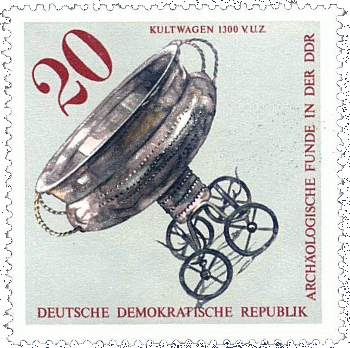Nano-Grained Structural Materials
May 24, 2011
Chemists are principally concerned with the composition of materials, but
materials scientists are concerned with their structure as well. My favorite definition of
materials science is as follows:
Materials science is the science of how the macroscopic properties of materials relate to their composition and structure.
When I studied materials science, my coursework was a mixture of
physics,
chemistry and
engineering. The curriculum had evolved from
metallurgy, but we were studying
statistical mechanics and
quantum mechanics in the chemistry building,
classical mechanics in the physics building, and
fracture mechanics in the engineering building. I enjoy reminding people that the iconic chemist,
Linus Pauling, wrote many metallurgy papers; and
Sir William Lawrence Bragg, author of the eponymous
Bragg's Law and a
Nobel Physics Laureate at age 25, conducted experiments on
dislocation reactions using
bubble rafts.
Nanotechnology has opened a huge new area of study for materials scientists. Now, you can take nearly every material that's been developed since the
bronze age and make nanoscale versions with completely different
properties. Fortunately, these different properties are often better properties.

A bronze chariot for a vase or vessel used for religious purposes.
A Bronze Age artifact found in 1855 at Ystad in Scandia, southern Sweden.
(Via Wikimedia Commons)
A team of materials scientists at the
Shenyang National Laboratory for Materials Science, Institute of Metal Research,
Chinese Academy of Sciences,
Shenyang, China, has investigated the mechanical properties of what they call gradient nanograined
copper.[1-5] This material is designed to take advantage of the high
tensile strength of nanograin copper, while simultaneously keeping some of the
ductility of natural copper.
One analogy to the utility of ductility is that huge
tree that likely sits in your front yard. In high
winds (caused by
global warming, of course) the
tree limbs bend considerably. This ability to bend protects them from breaking off.
Nano-grained metals are very strong, and coarse-grained metals are ductile. Nano-grained metals are somewhat like
ceramics. They have high strength and zero ductility. The reason for this is because the small grains suppress the movement of dislocations, which is the primary mechanism for ductility. Nano-grain materials do not
work harden, so
strain becomes localized and failure occurs shortly after initial yield.
Previous studies found a way to add ductility to nano-grained materials by attaching them to a ductile substrate. The ductile substrate acts to average the local strain among nano-grains. In this way, nano-grained copper films on a
polymer substrate had a 10% greater
elongation, but at that point the composite failed when the copper
delaminated from the polymer.
The solution to the delamination problem is a better match of the nano-grained material and its carrier materials. To accomplish this, the Chinese team created a
"dog bone" tensile rod of copper having a 6 mm diameter
gauge section with a coarse grain structure at its axis, gradually becoming a nano-grain structure at the surface. This gradient nanograined copper rod was found to have ten times the strength and twice the ductility of normal, coarse-grained copper.
They were able to stretch the rod to twice its length, the gradient structure was maintained, and no cracks formed. The proposed mechanism for such performance is
grain boundary migration. This makes sense, since the gradient structure puts very similar grains alongside each other.
The nano-grain surface was created by a process known as "surface mechanical grinding treatment," or SMGT. In this process, the copper rod was first
annealed at 723
K for 1.5 h to obtain a coarse-grained
polycrystalline structure throughout. At that stage, the average grain size was about 21 μm. The SMGT is performed by placing the rod in
liquid nitrogen and working it repeatedly at 600 rev/min rotation by a 3 mm radius hemispherical tool of
tungsten carbide and
cobalt. Details of the SMGT are in the supplementary material for the team's publication,[2] and in a previous publication.[3]
Although it's somewhat more complex than
diamond turning, the surface mechanical grinding treatment should be applicable to most components, since the mechanical work done by the hemispherical tool could be programmed in a milt-axis positioner.
References:
- T. H. Fang, W. L. Li, N. R. Tao and K. Lu, "Revealing Extraordinary Intrinsic Tensile Plasticity in Gradient Nano-Grained Copper," Science, vol. 331, no. 6024 (March 25, 2011), pp. 1587-1590
- T. H. Fang, W. L. Li, N. R. Tao and K. Lu, Supporting Online Material for Ref 1.
- W.L. Li, N.R. Tao and K. Lu, "Fabrication of a gradient nano-micro-structured surface layer on bulk copper by means of a surface mechanical grinding treatment," Scripta Materialia, vol. 59 (May 15, 2008), pp. 546-549.
- Felix Cheung, Metals: Strong and stretchy," Nature (China), March 2, 2011.
- Gradient Nano-grained Copper: Strong and Ductile, February 18, 2011.
Permanent Link to this article
Linked Keywords: Chemist; materials scientist; materials science; physics; chemistry; engineering; metallurgy; statistical mechanics; quantum mechanics; classical mechanics; fracture mechanics; Linus Pauling; Sir William Lawrence Bragg; Bragg's Law; Nobel Physics Laureate; dislocation reaction; bubble raft; Nanotechnology; bronze age; materials properties; Wikimedia Commons; Shenyang National Laboratory for Materials Science, Institute of Metal Research; Chinese Academy of Sciences; Shenyang, China; copper; tensile strength; ductility; tree; wind; global warming; tree limb; ceramic; work harden; strain; polymer; elongation; delamination; dog bone tensile rod; universal testing machine; gauge length; grain boundary; annealing; kelvin; K; polycrystalline; liquid nitrogen; tungsten carbide; cobalt; diamond turning.